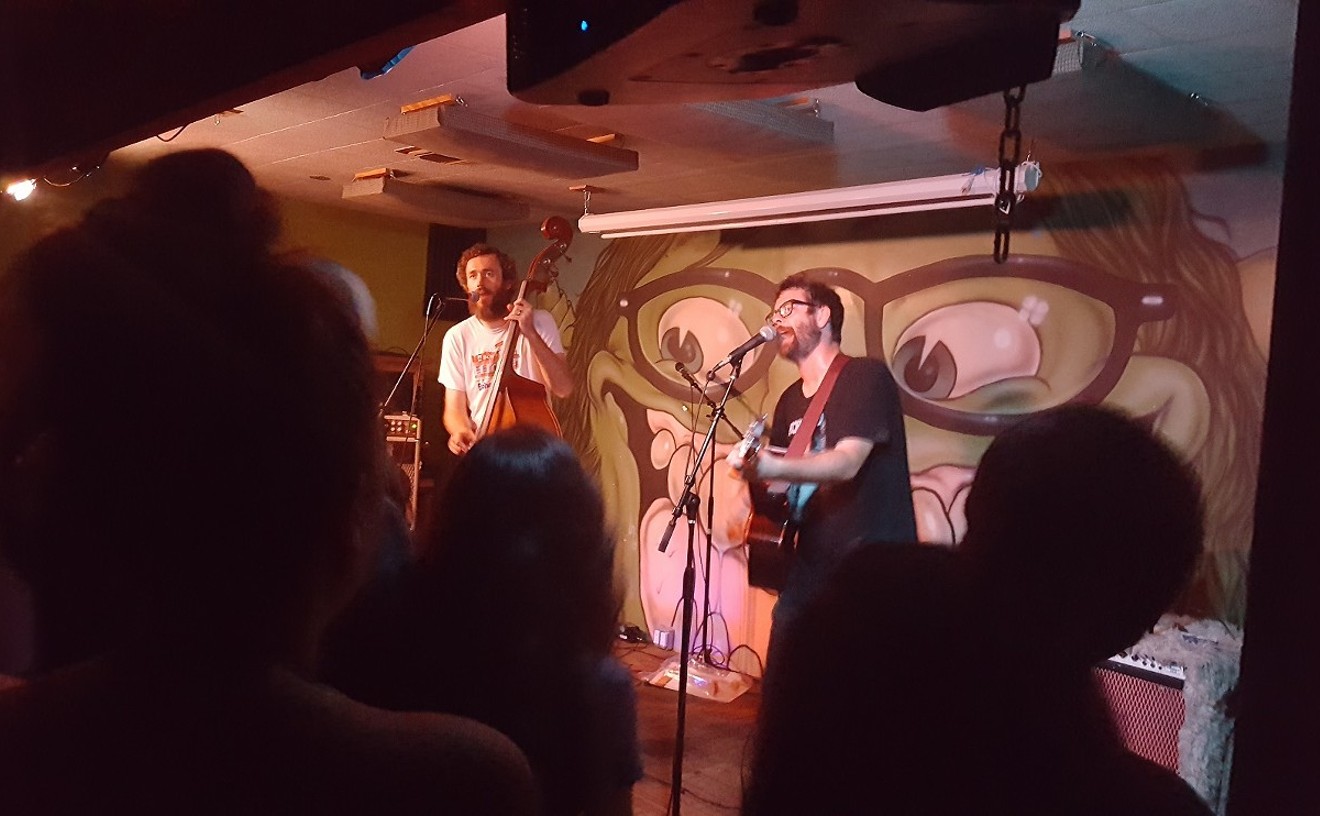Faythe Levine and Sam Macon's "Sign Painters" is the kind of book you buy as a present for someone else because it looks cool and then can't part with yourself.
The photographs are what draw you in first, of old school sign painters and their work.
There's Ernie Gosnell's cartoonish devil head with a blue pompadour, floating over the words "No Drunks, No Assholes." (Gosnell himself is a spectacle -- he wears a plaid pork pie hat atop his long gray hair and his ringed hands are both illustrated with intricate tattoos.) And Roderick Laine Treece's luxurious gold-gilded glass signs, announcing "United Cigar Stores" and "Colt Firearms Company."
See also: - Robin Sloan Stirs New and Old Literary Tech in Mr. Penumbra's 24-Hour Bookstore - Should Artists Paint Murals for Free? - Documentary Filmmaker Jill Morley Talks About Her New Film Fight Like a Girl Screening at Phoenix Film Festival
And then there are the stories that go with the pictures. Embedded in the two-dozen engaging first-person accounts that describe the different ways these artists came to their vocation and what it means to them, you'll find a portrait of America itself, of the grizzled guys who've been painting signs for decades and the younger sign painters who hope to preserve what has at times looked like a vanishing art.
Justin Green, in Cincinatti, Ohio, notes that before the advent of vinyl, "a sign painter was an interloper in every strata of society -- and I mean that literally. One day you'd be on your knees lettering an industrial roll-up door with the words TOW AWAY and the next day you'd be on the thirty-fourth floor of a bank's headquarters painting gold leaf....It was phenomenal."
Josh Luke, a sign painter in Boston, founded the Pre-Vinylite Society "to subvert the recent convention of lifeless vinyl signage as a digression from the time-honored institution and rich history of hand-painted signs." And Phil Vandervaart, who lives in Minneapolis, says that when he started painting signs in his 20s, he had access to "a lot of the old-timers who are now gone." (Vandervaart is 58.)
Like so many of the people Levine and Macon interview for the book (there's a companion documentary film, as well), Vandervaart served an informal apprenticeship under older painters, who knew the tricks of the trade and would pass them on to those who demonstrated enough interest.
"They were really brutal," Vandervaaet says. "Once, after watching me paint a sign, one of them said, 'I want you to come back here.' He walked me about thirty feet back and said, 'Tell me why your sign looks like crap.' At first I was offended, but then I really appreciated his feedback and I took it to heart."
SIGN PAINTERS (OFFICIAL TRAILER) from samuel j macon on Vimeo.
All the interviewees share the very specific passion that is painting signs, but they vary in background, age, and gender. Some started in fine arts and then gravitated to sign painting; several of the younger painters began as apprentices in a shop in San Francisco called New Bohemia Signs, to which the preservation of the art of sign painting would seem to owe a significant debt. Others fell into painting signs because it was a job that allowed freedom of movement, or, as Ernie Gosnell puts it, "I could make a living and not have to deal with the man."Ultimately, "Sign Painters" will make you nostalgic for signs gone by, and hopeful that a new generation is ensuring that the craft and art of sign painting will not die out.
A few of the painters interviewed, like San Francisco's Jeff Canham, see the new ways (digital rendering) and the old ways (hand painting) as compatible rather than mutually exclusive, which means the advent of one doesn't have to signal the death of the other. And on another encouraging note, Josh Luke, the guy who founded the Pre-Vinylite Society, says that in the last two or three years, he's noticed a much higher demand for hand painted signs.
"People generally seem to be moving away from mass-produced products," Luke says. "They want something with more warmth and humanity" -- like this book, in fact.
And if you are so moved by "Sign Painters" that you want to take up the exercise yourself, the last 22 pages are devoted to a reprinting of Chas L.H. Wagner's "Blue Print Text Book of Sign and Show Card Lettering," which is full of good advice.
Now all you need is a grizzled old-timer to apprentice under.
"Sign Painters" is now available for purchase at major bookstores. Stay tuned for a Phoenix screening of the film this summer ... Follow Jackalope Ranch on Facebook and Twitter and Pinterest.










